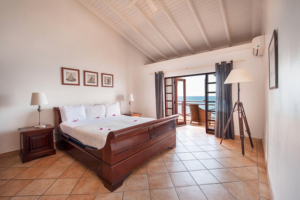Destination Overview:
Discover the underwater paradise of St. Eustatius, a diver’s haven nestled in the pristine waters of the Caribbean. Known for its untouched coral reefs, vibrant marine life, and captivating shipwrecks, this hidden gem offers an unforgettable diving experience. Dive into crystal-clear waters teeming with colorful coral formations, inhabited by an array of marine species including turtles, rays, and tropical fish. Explore historic wrecks that tell tales of a rich maritime past. With its warm, year-round climate and excellent visibility, St. Eustatius beckons divers of all levels to explore its depths and encounter the breathtaking beauty that lies beneath the waves. Immerse yourself in a world of underwater wonders and create lasting memories in this diver’s paradise.
Diving Details:
Dive into the vibrant underwater world of St. Eustatius, a Caribbean haven celebrated for its well-preserved coral reefs and diverse marine life. The island offers excellent visibility, often reaching 30-40 meters, and maintains warm waters year-round. Explore an array of captivating dive sites, including stunning coral formations and historic shipwrecks like the Charles Brown and Hilma Hooker. Whether you’re a seasoned diver or a beginner, there’s something for everyone with guided dives, PADI certification courses, and a commitment to responsible diving practices. Immerse yourself in an unforgettable diving adventure, respecting and enjoying the island’s underwater wonders.
Insider Information:
St. Eustatius, also known as Statia, was the first foreign entity to officially recognize the independence of the United States. On November 16, 1776, the island fired the first salute to the American warship Andrew Doria, symbolizing the acknowledgment of the United States as a sovereign nation. This event is known as the “First Salute” and is commemorated annually as a celebration of the enduring friendship between the United States and St. Eustatius.

 Statia Divers, part of Golden Rock Resort, offers premier diving adventures along the windward coastline of St. Eustatius. Led by experienced PADI instructors, they provide valet-guided dives tailored to all experience levels, featuring top-quality ScubaPro rental gear and complimentary Nitrox for certified divers.
Statia Divers, part of Golden Rock Resort, offers premier diving adventures along the windward coastline of St. Eustatius. Led by experienced PADI instructors, they provide valet-guided dives tailored to all experience levels, featuring top-quality ScubaPro rental gear and complimentary Nitrox for certified divers.






















